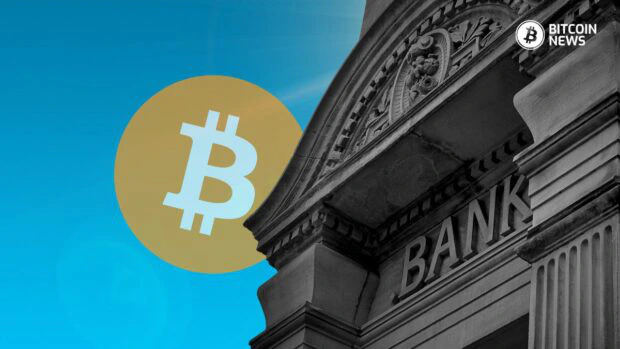In the evolving landscape of digital assets, Bitcoin banks can play a huge role in helping Bitcoin scale. While these institutions offer the allure of convenience, they also raise questions about control and the fundamental principles that underpin the Bitcoin ethos. However, it’s important that Bitcoiners don’t throw the baby out with the bath water.
The following quote from Hal Finney, one of the first people besides Satoshi to run the Bitcoin software, provides valuable insight into the potential role of Bitcoin banks.
“Actually there is a very good reason for Bitcoin-backed banks to exist, issuing their own digital cash currency, redeemable for bitcoins. Bitcoin itself cannot scale to have every single financial transaction in the world be broadcast to everyone and included in the block chain. There needs to be a secondary level of payment systems which is lighter weight and more efficient. Likewise, the time needed for Bitcoin transactions to finalize will be impractical for medium to large value purchases.
Bitcoin backed banks will solve these problems. They can work like banks did before nationalization of currency. Different banks can have different policies, some more aggressive, some more conservative. Some would be fractional reserve while others may be 100% Bitcoin backed. Interest rates may vary. Cash from some banks may trade at a discount to that from others.
George Selgin has worked out the theory of competitive free banking in detail, and he argues that such a system would be stable, inflation resistant and self-regulating.
I believe this will be the ultimate fate of Bitcoin, to be the “high-powered money” that serves as a reserve currency for banks that issue their own digital cash. Most Bitcoin transactions will occur between banks, to settle net transfers. Bitcoin transactions by private individuals will be as rare as… well, as Bitcoin based purchases are today.”
– Source
In late 2010 Hal was envisioning a future where Bitcoin serves as a reserve currency, underpinning a network of banks that issue their own digital cash, redeemable for Bitcoin. This hierarchical system, he argues, is necessary to address the scalability challenges of broadcasting every transaction on the blockchain and the impracticality of using Bitcoin for small-value purchases.

The Irony Of Banks Scaling Bitcoin
The concept of “Bitcoin banks” may seem paradoxical, as Bitcoin’s decentralized nature was intended to circumvent traditional financial intermediaries. However, these entities can find a niche by providing services that cater to users who prioritize accessibility and convenience over complete self-custody. While Bitcoin banks offer a degree of security and ease of use, this comes at the cost of relinquishing direct control over one’s digital assets to a centralized entity, contrasting the ethos of self-sovereignty championed by Bitcoin’s creator, Satoshi Nakamoto.
That said, there will be many attempts in order to scale the network and bitcoin banks could play a crucial role. Enabling broader adoption and allowing billions of people around the world to access and utilize Bitcoin in a manner that suits their needs and preferences seems like a good thing. While self-custody remains the purest form of decentralization, Bitcoin banks offer a gateway for those prioritizing accessibility and ease of use over complete self-sovereignty. Nonetheless, this model may not resonate well with many in the space who seek to dismantle fractional reserve banking and the creation of money out of thin air, as it introduces a degree of centralization and potentially compromises some of Bitcoin’s foundational principles.
The Blockchain Trilemma
Bitcoin’s design represents a conscious trade-off among the three desirable properties of a blockchain system: decentralization, scalability, and security. In prioritizing decentralization and security, Bitcoin sacrificed some degree of scalability, rooted in the vision of creating a truly peer-to-peer electronic cash system, free from centralized control and resistant to censorship.
It is likely that as more traditional banks adopt Bitcoin, they will transact on their own internal rails rather than on the blockchain itself. For example, if both parties involved in a transaction bank with the same institution, the bank may simply update its internal database rather than broadcasting the transaction to the Bitcoin network, saving on fees but potentially compromising the decentralized nature of the system.
Through a process of trial and error, successful scaling solutions will emerge, striking the optimal balance between the three properties based on the diverse needs and preferences of users. This market-driven approach, rooted in the principles of open-source collaboration and free competition, is perhaps the most promising path to resolving the blockchain trilemma and unlocking Bitcoin’s full potential as a global, decentralized financial system.
Convenience vs. True Ownership
- Security Considerations: While Bitcoin banks employ robust security measures, the inherent risks of centralized custody cannot be ignored. Hackers and cybercriminals may view these institutions as lucrative targets, potentially compromising the safety of users’ funds. However, an even greater risk is the bank’s potential insolvency, leaving customers unable to access or recover their assets.
- Counterparty Risk: Entrusting a third party with one’s digital assets introduces a layer of trust that may be antithetical to Bitcoin’s decentralization. The possibility of mismanagement, insolvency, or malfeasance by the custodian undermines the principles of self-sovereignty and censorship resistance.
- Privacy Implications: Bitcoin banks, like traditional financial institutions, are subject to regulatory oversight and may require personal information disclosure, potentially compromising the privacy afforded by true decentralized systems, in contrast to Bitcoin’s pseudonymous nature.
- Ease of Use and Integration: For the less technologically inclined or those seeking integration with traditional finance, Bitcoin banks offer a user-friendly gateway to digital assets, bridging the gap between Bitcoin and fiat currencies. However, this convenience comes at the cost of relinquishing true ownership and control, as users must seek permission to access their own money, contrasting the self-custody and financial sovereignty ethos championed by Bitcoin.
While chargebacks and transaction disputes with traditional banks may seem convenient, it highlights the paradox of asking for permission to use one’s own money, starkly contrasting the principles of self-sovereignty and censorship resistance that underpin Bitcoin.
Bitcoin Banks: Weighing The Tradeoffs
Ultimately, the choice between self-custody and Bitcoin banks boils down to personal preferences, risk tolerance, and adherence to the underlying principles of decentralization. While Bitcoin banks offer convenience and accessibility, self-custody remains the truest embodiment of the Bitcoin ethos, empowering individuals to take full control of their digital assets.
As Bitcoin landscape continues to mature, striking the right balance between convenience and control will be an ongoing challenge. Regardless of the path chosen, it is essential to approach this decision with a clear understanding of the tradeoffs and implications involved.










